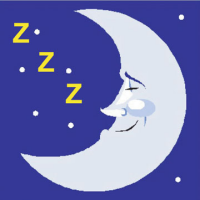Game Date: Apr 28th, 2064
Discussion Forum
Forum >> Discussions >> Recommended Minor League Strategies 
 |
|  |
| 
| Post ID | Date & Time | Game Date | Function |
|---|---|---|---|
| #5752 | 12/19/2013 4:49:46 pm | ||
|
admin Joined: 01/27/2010 Posts: 4985 Administrator 
| Been getting a lot of questions about the strategy of managing their minor leagues, so I thought I’d just post some thoughts on it. 1. Determine what your needs are in the near future. For current needs, you probably need to go free agency/waivers. 2. If your team is weak, you may wish to draft college players (as they will mature faster). 3. If your team is strong, you may wish to draft high school players…may have more time to evaluate them and shape your farm system. 4. International and Asian signees are fine, but those are smaller pools, so just be aware that those pools may drain of talent quickly. 5. When evaluating draftees/signees, the most important criteria is the scouting report. Positions (other than pitcher) can be changed and other bits of information are less important. 6. Don’t make selection decisions based on your current big league roster. By the time these youngster are ready for the jump to the big leagues, your roster might be quite different. 7. Be aware of the number of pitchers you have in the minor leagues. You probably don’t want to stock too many or too few. 8. Observe what skills are important in the big leagues and determine what are “must have” skills and “nice to have” skills. 9. It’s probably nice to have a mix of left handers and right handers…but I would consider this less important. 10. Don’t put all the eggs in one basketball – there are few “sure thing” prospects. Once you’ve got your farm system going, I would evaluate the players every few weeks. If you are adding new players each week, you will quickly hit your roster maximum and you’ll need to cut players if you wish to add new players. I’d use the following procedure: 1. Compare age & SI and consider cutting players that seem to be lagging. 2. Evaluate you big league roster and consider cutting unused players and promote AAA players that are ready for the big time. 3. Shape you minor league roster to what your future needs might be. If you need pitchers, don’t cut your minor league pitchers. If you need a short stop, consider giving a minor leaguer playing time at short stop. 4. SI is an overall measure, but it probably shouldn’t trump information from the scouting report. 5. Skills levels (especially in the lower minor leagues) are so low, that I wouldn’t place a lot of stock in them. Hope this helps, Steve |
||
| #9170 | 07/31/2014 4:22:08 am | ||
|
Haselrig Joined: 04/13/2014 Posts: 2790 Novi Doubledays III.4 
| Question regarding minor leaguers who turn 25 while still in A ball and are recommended to move directly to the majors. Is there any training to be gained by leaving them at A, or does turning 25 "use up" all of their minor league training potential and moving them to the majors is the only way they'll improve further? Thanks o/ Updated Thursday, July 31 2014 @ 9:14:03 am PDT Updated Thursday, July 31 2014 @ 2:37:39 pm PDT |
||
| #9184 | 07/31/2014 2:32:17 pm | ||
|
yanksfan13 Joined: 04/25/2014 Posts: 83 Inactive 
| What about Spring Training? If I have a choice between giving time to a player who has 5 years experience already and is close to making the jump to the majors and a promising prospect with 0 years experience, to whom should I give it (all other things equal)? I guess I'm asking whether or not spending time in spring training will increase a prospect's experience counter. |
||
| #9209 | 08/01/2014 5:52:05 pm | ||
|
dwindacatcher Joined: 04/03/2014 Posts: 633 Inactive 
| I have been trying to figure out the best way to evaluate scouting reports. Please someone correct me if I am wrong in the below assumptions. Player A vs player B Both players are the same age, same si, and same potential. Player A scouting report says only very good potential. Player B scouting report says: he has a major league fastball. He has good control. He has very good potential. Player B is almost always going to end up the better pro, right? What little poking around I've done seems that the more info the scouting report gives, good or bad, the more likely the player is to max out their si. And the ones that have all good things are the ones that don't end up with lopsided stats. Any event else notice this? Or am I seeing a pattern that doesn't exist? |
||
| #9212 | 08/01/2014 6:13:35 pm | ||
|
Haselrig Joined: 04/13/2014 Posts: 2790 Novi Doubledays III.4 
| I'm working off the same assumption dwindacatcher. I go with the ones with all positive traits when possible. I'm also thinking that you only have so many SI to work with, so a great hitter/prolific slugger/amazing in the field guy with 13 potential may suffer in the Bat Control and Plate discipline areas, especially if he's fast, has range or a good arm. Updated Friday, August 1 2014 @ 6:15:17 pm PDT |
||